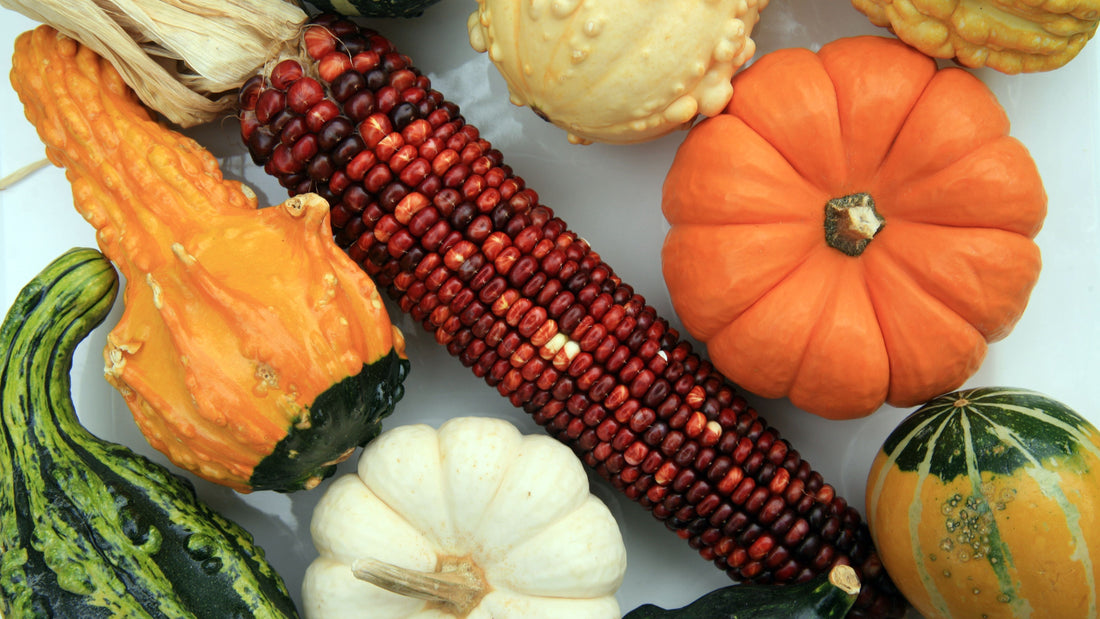
Seasonal Styling: Simple Ways to Make Your Table Feel Alive
Share
There’s something magical about styling a table with what’s in season. Fresh fruit, branches, herbs, or flowers – the same ingredients that flavor your food can also decorate your table. They bring texture, scent, and color in a way that feels effortless and alive.
Styling with seasonal ingredients isn’t about perfection. It’s about looking at what’s growing, what’s available at your local market, and letting nature do the work. The result feels grounded, spontaneous, and real – as if your table simply grew into being.
1. Start at the Market, Not the Store
When you think about your table, think produce first, not props.
A bunch of grapes spilling from a bowl, figs sliced open to reveal deep crimson tones, or lemons gathered in a low ceramic dish can all become centerpieces.
Tip: When in doubt, pair one color family – like green and gold – and repeat it through fruits, herbs, and candles. It creates a visual thread without overstyling.

A local farmer’s market is often the best inspiration board you can find. The stalls themselves are a masterclass in color harmony and natural abundance – you’ll notice how everything simply works together without trying too hard.
2. Let the Season Lead
Each season offers its own palette:
- Spring: Peas, artichokes, radishes, herbs, and delicate blooms
- Summer: Tomatoes, peaches, lavender, olive branches
- Fall: Figs, pears, grapes, pomegranates, wheat, artichokes
- Winter: Citrus, nuts, evergreens, rosemary, dried hydrangeas

A sprig of thyme tied around a napkin or a persimmon tucked beside a plate tells a quiet seasonal story – one that changes naturally through the year. When you style with the season, your table feels current and connected. The colors outside your window flow seamlessly into your home, creating a sense of harmony that no store-bought décor can imitate.
3. Think Texture, Not Clutter
Seasonal ingredients bring texture – and texture brings depth. Mix soft napkins with rough stems, glossy fruit skins with matte ceramics. Contrast height and shape: a bowl of pears beside a cluster of low votives or a tall vase of olive branches.
Pro tip: Don’t arrange too symmetrically. Nature rarely does. Let a few leaves fall, let fruit roll slightly – it adds life.
Texture is what makes a table feel touchable and alive. The way linen wrinkles, candle wax drips, or herbs lean ever so slightly gives your setting authenticity – that delicate balance between order and imperfection that’s irresistibly human.

4. Create Multi-Sensory Moments
Good styling doesn’t just look beautiful – it smells and feels beautiful, too.
Think of rosemary releasing aroma as candles warm the air, or citrus giving a subtle freshness to the room. When guests arrive, the table should feel as inviting as the meal itself.
5. Use What You Have
A simple linen runner, a few seasonal accents, and good lighting can transform an everyday table. Styling doesn’t need abundance – it needs awareness.
Try this:
- Scatter clementines and candles on a white tablecloth in winter
- Layer grapevines and brass in autumn
- Use basil and tomatoes for a summer Italian dinner

The result? A table that feels alive, personal, and deeply seasonal – without buying a single “decor” item. The secret lies in how you see, not how much you own. When you start viewing everyday things – lemons, herbs, market flowers – as design elements, your home becomes a living, breathing canvas that shifts with the seasons.
Why It Matters
A seasonally styled table connects you to rhythm – of nature, of time, of home. It reminds you that beauty doesn’t come from effort; it comes from attention. And that, more than any centerpiece, is what makes your guests feel something.
When you decorate with what’s real and fresh, you invite nature to dine with you. The table becomes a reflection of the moment – and that’s where the true magic of hosting begins.
